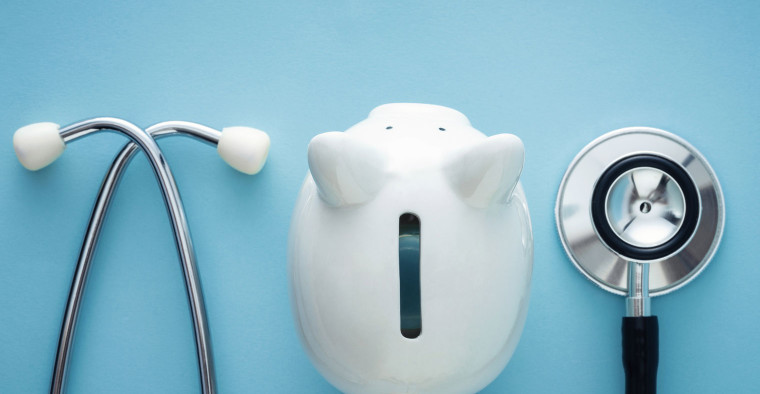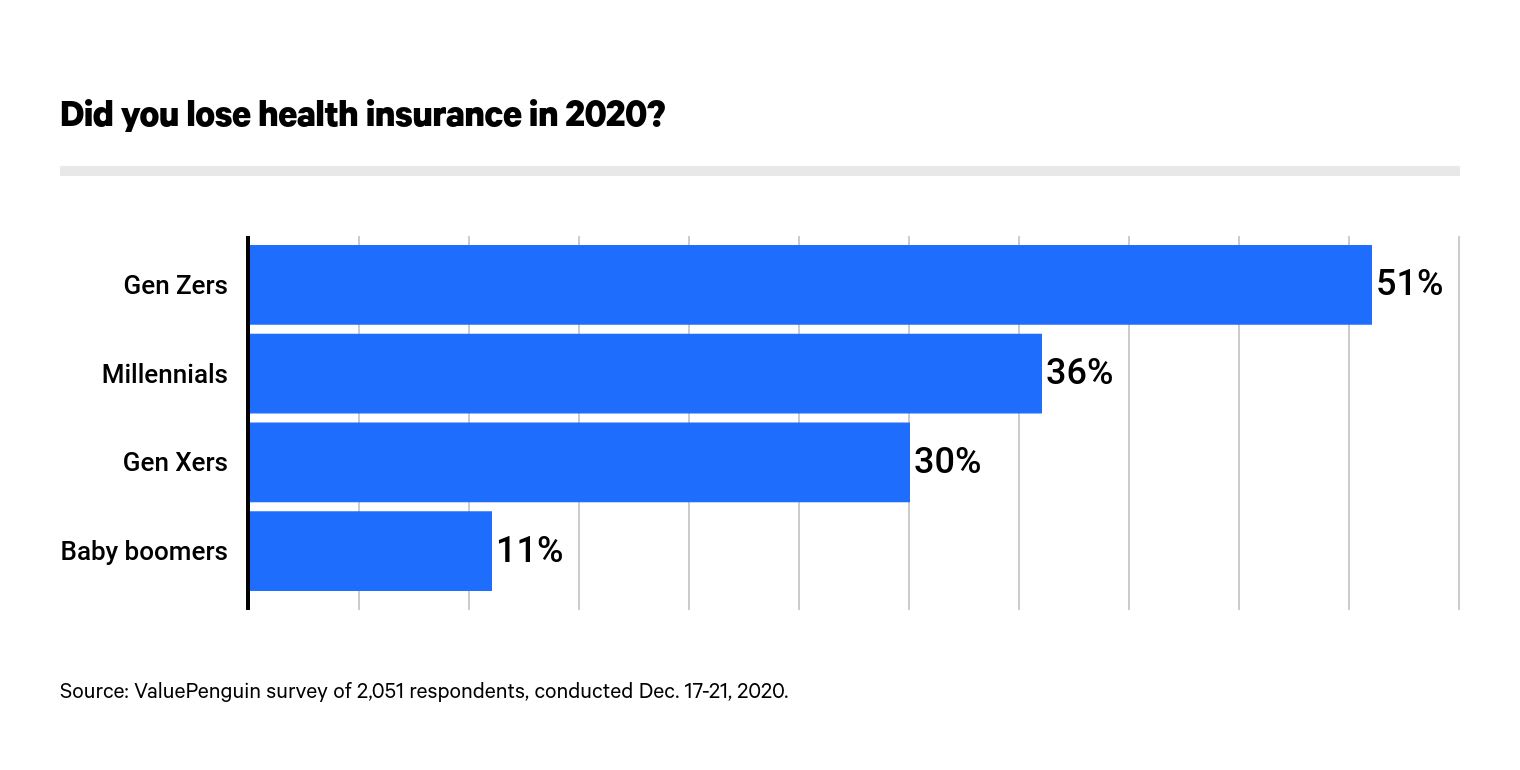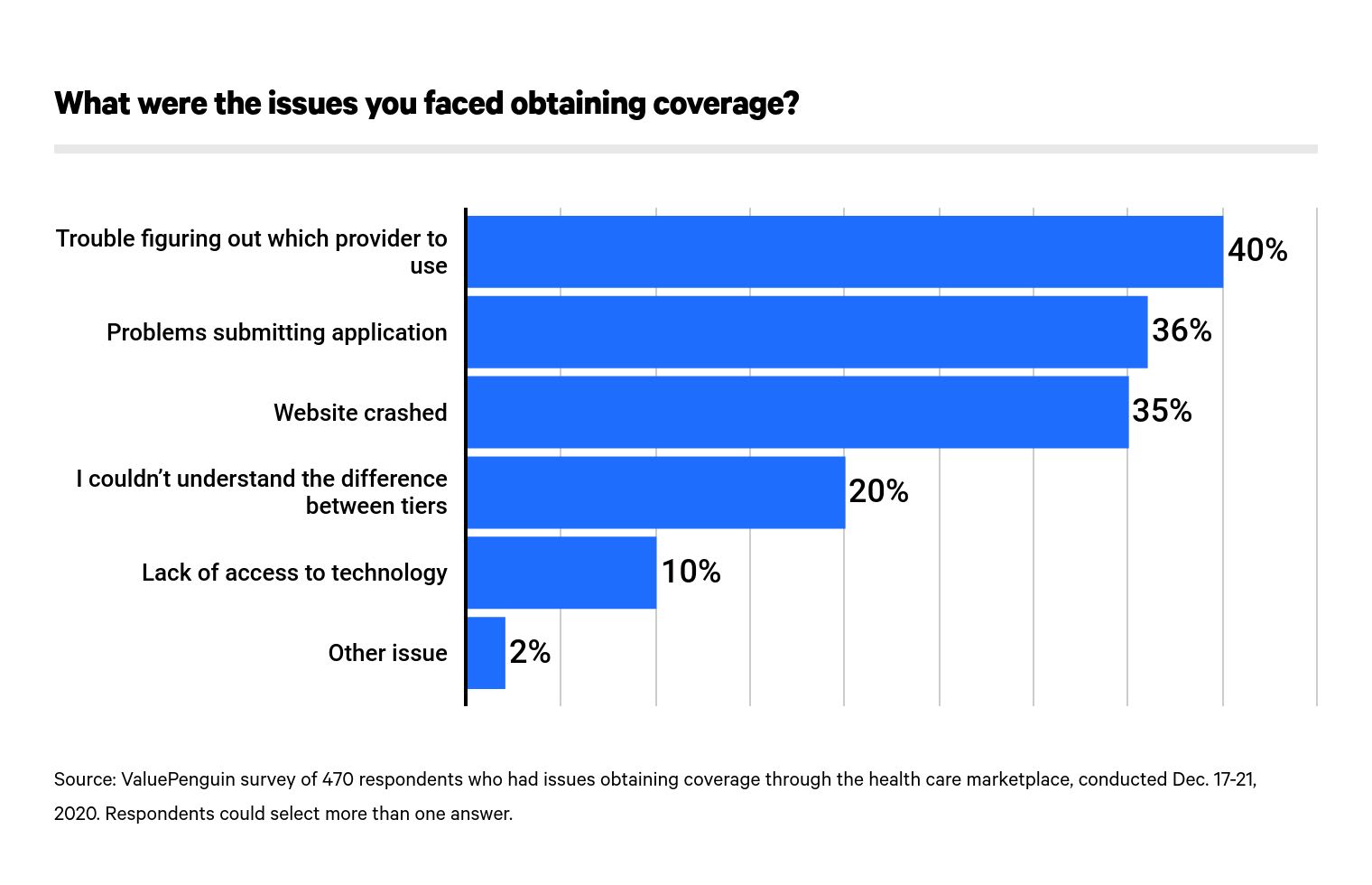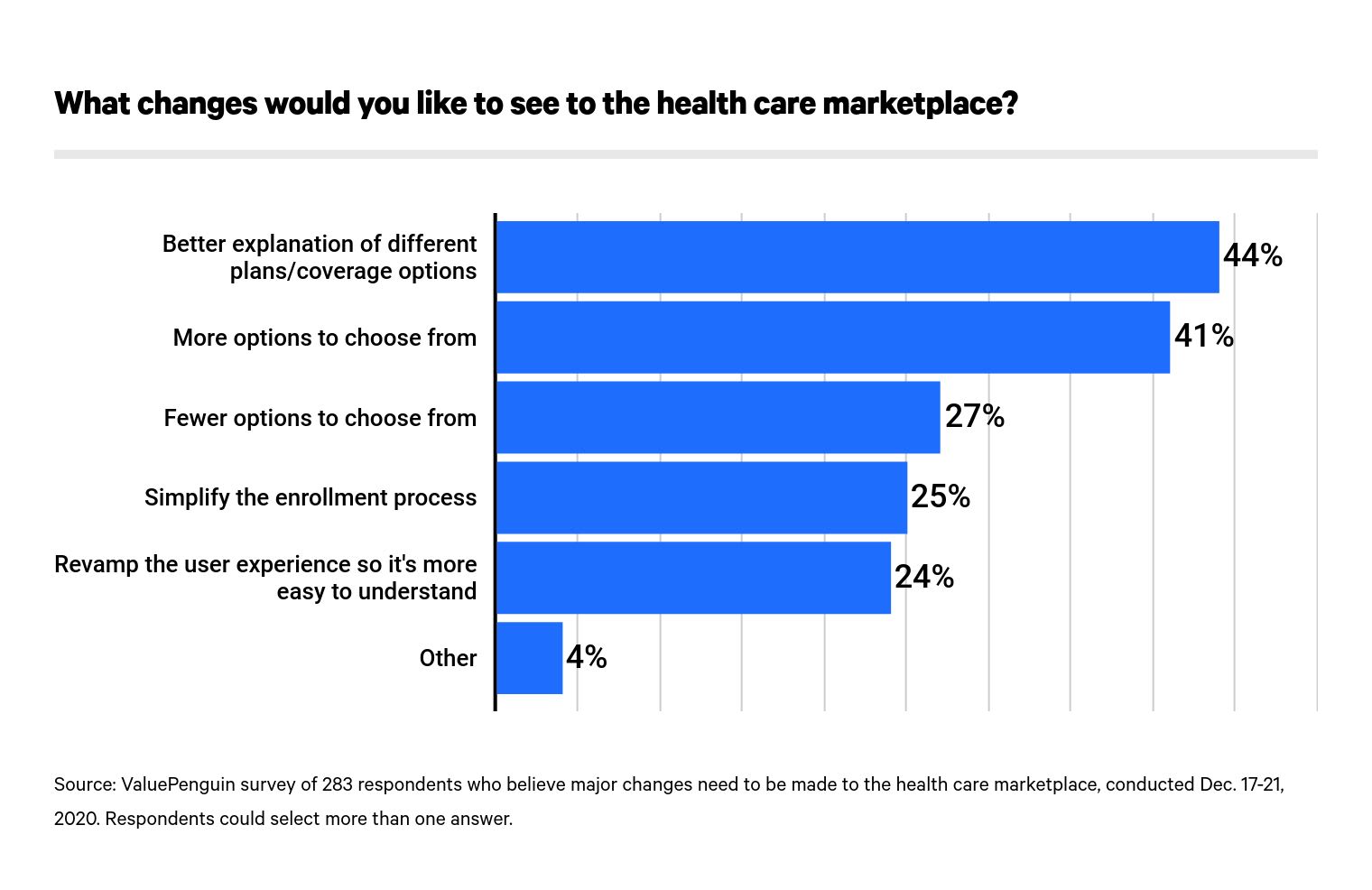Health Insurance
Nearly 3 in 10 Americans Lost Health Insurance Coverage in 2020, and More Than Half of Them Remain Uncovered Due to Cost Barriers

In 2020, 29% of Americans lost health insurance coverage, according to the latest survey from ValuePenguin. Of these individuals, more than half haven't bought new coverage and remain uninsured.
We asked more than 2,000 consumers about their 2020 coverage and the most recent open enrollment period, finding that 45% of health care marketplace users were surprised by the high costs of their new policies. This has led to many wanting changes to the process. For example, some people want to understand the plans better or have more options for coverage.
Key findings
- Twenty-nine percent of consumers lost health insurance coverage at some point in 2020. Generation Zers and those who were laid off or furloughed amid the pandemic were especially impacted, as about half of both groups lost coverage — and many remain without.
- The main reason many lost health insurance coverage and remain uncovered is cost. Of those who still don't have coverage, 42% said they don't have enough money to afford premiums or the deductible, while 31% said they have other expenses they need to prioritize.
- While some consumers turned to the health care marketplace for coverage, it wasn't without challenges. Nearly two-thirds (64%) of consumers who have purchased health insurance through the marketplace at some point encountered at least some issues doing so, including confusion about different plans and website crashes.
- Forty-five percent of health insurance marketplace users said the cost of that health insurance was higher than they expected. Younger generations were most likely to say they spent more on marketplace health insurance than they thought they would.
- Consumers call for major changes to the health care marketplace, but they aren't aligned on the level of choice. For example, 38% of consumers who have used the health insurance marketplace think there aren't enough choices, but 33% feel there are too many choices. Separately, 59% like having choices, but 29% would prefer a single option.
More than half of those who lost coverage in 2020 haven't replaced their health insurance
Nearly one in 10 (9%) lost coverage due to a job loss and remain uninsured. Furthermore, half of Gen Z respondents indicated they lost health insurance coverage at some point this year, which was the most among all age groups.

Losing health insurance coverage was exceptionally high for those who were laid off or furloughed due to the coronavirus pandemic. In fact, 47% of respondents fell within this category. Additionally, 39% of individuals who were able to keep their job but had their hours or salary cut also lost health insurance coverage in 2020.
Those who earn $100,000 or more a year and those with a bachelor's degree were the least likely to lose health insurance coverage in 2020 at 19% and 22%, respectively.
A troubling trend in our survey was that 14% of parents with children younger than 18 lost their insurance and continued to remain uncovered, which meant that the majority of kids were uninsured, too. On a similar note, 41% of parents with an income of less than $35,000 lost health insurance coverage in 2020.
The primary reason that consumers are choosing to go uninsured is premium or deductible costs
More than four in 10 (42%) said they don't have enough money to pay for deductibles or premiums.
Other reasons individuals are deciding to forego coverage:
- Other expenses to prioritize (31%)
- Hoping to get a job that offers health insurance (20%)
- Haven't looked into it due to anxiety (16%)
- Marketplace too confusing (11%)
Interestingly, women (51%) were more likely than men (34%) to respond that they couldn't afford to pay for their health insurance policies.
On the other hand, some individuals were able to get new coverage and actively searched for a health insurance policy. When faced with trying to find new insurance, 29% decided to enroll in an individual health insurance policy through their state marketplace.

6 years after the creation of state health insurance marketplaces, individuals are still facing problems and confusion about what coverage they should choose
Nearly two-thirds (64%) of individuals who tried to access their health insurance marketplace through a state website or HealthCare.gov reported having some issue with the process.
Of those who did encounter issues with health insurance exchanges, the most (40%) had difficulty figuring out which provider to use.

A major issue for individuals was the amount of time it took to evaluate plans. In fact, 75% of respondents said it took them more than an hour to choose a policy and submit the accompanying application. Even more concerning, 7% said they spent seven or more hours completing the application process for marketplace health insurance.
More than a third of individuals want to see major changes to marketplaces, citing reasons such as coverage options
Thirty-eight percent of individuals who have used the marketplace thought there weren't enough choices for them, while 33% felt there were too many plans to look through.
A reason for this could be the variety of types of health insurance available, such as different provider networks and levels of coverage (Catastrophic, Bronze, Silver, Gold and Platinum).

Marketplace applicants also complained about policy costs. In fact, 45% of respondents felt they spent more than they would have thought on their new health insurance policy. Furthermore, younger individuals in our survey were more likely to say they overspent on marketplace health insurance compared to what they expected.
Due to a lot of movement from employer-sponsored health care to marketplace coverage in 2020, we also asked our respondents which policy they preferred. Overall, 40% of those who have had marketplace health insurance at some point liked their employer-sponsored policy better than the marketplace policy.
Marketplace health insurance help and suggestions
As seen in this survey and the experiences felt by customers, purchasing individual health insurance can be a confusing and daunting process to undertake. However, knowing some of the basics about these policies and what to look for can make your shopping experience more manageable.
First, your best health insurance will be a policy that is affordable for your budget and balances any potential health care costs you may experience during the plan year. For example, if you think you'll have high medical expenses, such as monthly prescriptions, choosing a Silver or Gold policy with a lower deductible could make sense.
Secondly, you should also compare health insurance companies to find the cheapest option. Many insurers offer cheaper premiums, but not as many offer extra benefits, such as gym membership discounts. Also, some insurers offer affordable rates but have smaller provider networks.
Methodology
ValuePenguin commissioned Qualtrics to conduct an online survey of 2,051 consumers, fielded Dec. 17-21, 2020. The sample base was proportioned to represent the overall population, and all responses were reviewed by researchers to ensure quality control.
We defined generations as the following ages in 2020:
- Generation Z: 18 to 23
- Millennial: 24 to 39
- Generation X: 40 to 54
- Baby boomer: 55 to 74
The survey also included responses from the silent generation (ages 75 and older). However, their responses weren't included in the generational breakdowns due to the low sample size for that age group.
